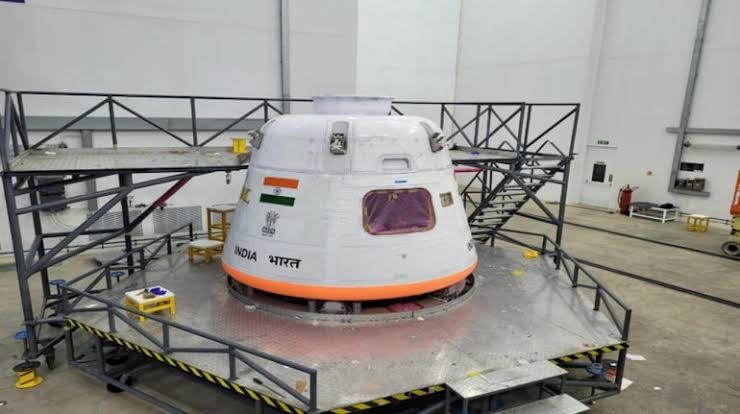
TV-D1 Mission

20.10.2023
TV-D1 Mission , Daily Current Affairs , RACE IAS : Best IAS Coaching in Lucknow
|
For prelims: important point,TV-D1 Mission,Gaganyaan Mission For mains:Mission Objective,Gaganyaan's first flight test vehicle,Crew Module |
Why in the news?
On October 21, 2023, the Indian Space Research Organization (ISRO) is set to launch its first test flight, TV-D1, for the Gaganyaan mission, marking a significant moment in India's pursuit of human space flight.
important point:
- Taking an unprecedented step towards realizing its ambitious Gaganyaan project, ISRO is on the verge of conducting the first test flight for the mission.
- Test flight TV-D1 (Test Vehicle Abort Mission 1) is a high altitude abort test as part of the Gaganyaan programme.
- This test will evaluate the readiness of the crew module for the Gaganyaan mission and demonstrate technology advancements including dual-redundant avionics systems.
- There will be no human passengers in this launch.
- According to ISRO chief Somnath, three more test missions, D2, D3, D4, have been planned after the first test flight.
About TV-D1 Mission:
- Test Vehicle Abort Mission-1 (TV-D1) will evaluate the readiness of the crew module for the Gaganyaan mission.
- It is a single-stage liquid rocket developed specifically for this aborted mission.
- The payload consists of the Crew Module (CM) and Crew Escape System (CES) with their fast-acting solid motors, CM Fairing (CMF) and interface adapters.
- This flight will simulate aborted conditions during the ascent trajectory corresponding to the Mach number of 1.2 encountered in the Gaganyaan mission.
- Abort and crew escape systems operate on the same principle as ejection seats found in fighter aircraft, with the primary goal being to protect the lives of crew members in the event of anomalies in flight.
- Crew escape systems have been developed to function automatically at various altitudes.
- This test flight will simulate an aborted situation during the ascent trajectory.
Mission Objective:
- Flight performance and evaluation of test vehicle subsystems.
- Flight performance and evaluation of crew escape systems, including various separation systems.
- Crew module characteristics and deceleration systems performance at high altitude and its recovery.
About Gaganyaan's first flight test vehicle:
- The Test Vehicle Abort Mission (TV-D1) will launch the crew escape system and crew module to an altitude of 17 km.
- The payload for this test flight includes the crew module and crew escape system, both equipped with fast-acting solid motors.
- During the test, the module will be taken into space, along with it it will be brought back to Earth and landed in the Bay of Bengal.
- This vehicle is 34.9 meters long and weighs 44 tonnes.
About Crew Module (CM):
- At the core of the Gaganyaan mission is the Crew Module (CM), a critical component where astronauts will be placed in a pressurized Earth-like environment.
- Crew module is the part inside which the astronauts will sit and revolve around the earth in a low orbit at an altitude of 400 kilometers.
- It is like a cabin, which also includes many facilities for astronauts.
- The crew module will have everything including navigation system, food heater, food storage, health system and toilet etc.
- Its inner part will tolerate high and low temperatures, as well as protect astronauts from space radiation.
- The SM will be used to provide necessary assistance to the CM while in class. It is an unpressurized structure that includes thermal systems, propulsion systems, power systems, avionics systems and deployment mechanisms.
About Gaganyaan Mission:
- Gaganyaan Mission is India's first human space mission which will last for three days.
- In this, a team of 3 members will be sent 400 KM above the earth's orbit.
- After this, the crew module will be safely landed in the sea, if this mission is successful then India will become the fourth country to do so after America, China and Russia.
- If Gaganyaan Mission TV-D1 is successful then the first unmanned mission of Gaganyaan Mission can be planned early next year.
- In the unmanned mission, humanoid robot i.e. robot of completely human form, Vyommitra, will be sent.
- After the success of the unmanned mission, there will be a manned mission in which humans will go to space.
- India's first manned space mission 'Gaganyaan' is planned to be launched in 2024.
Source: News on air